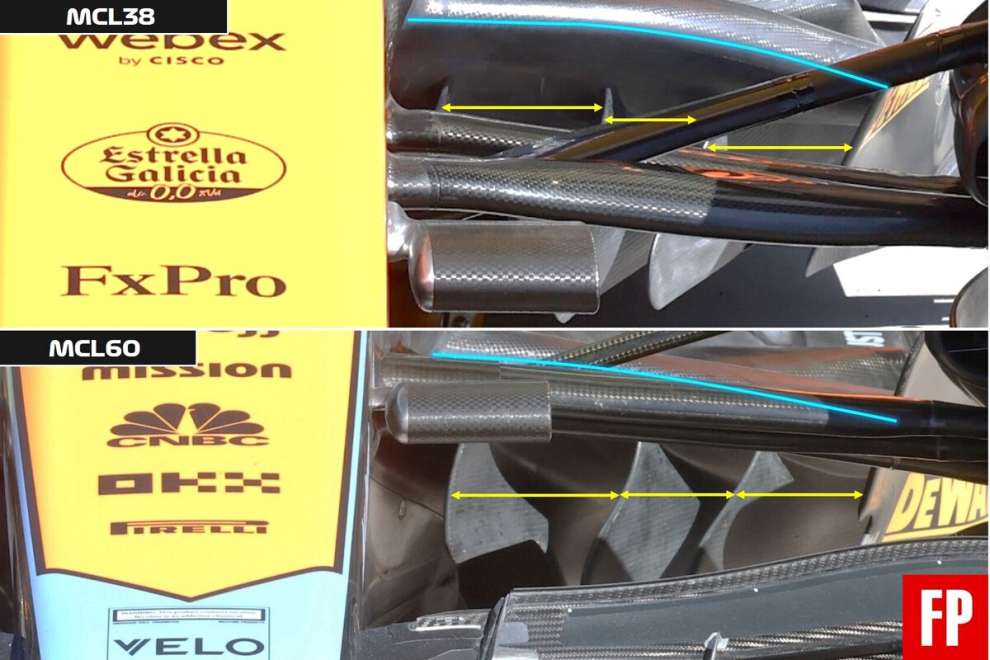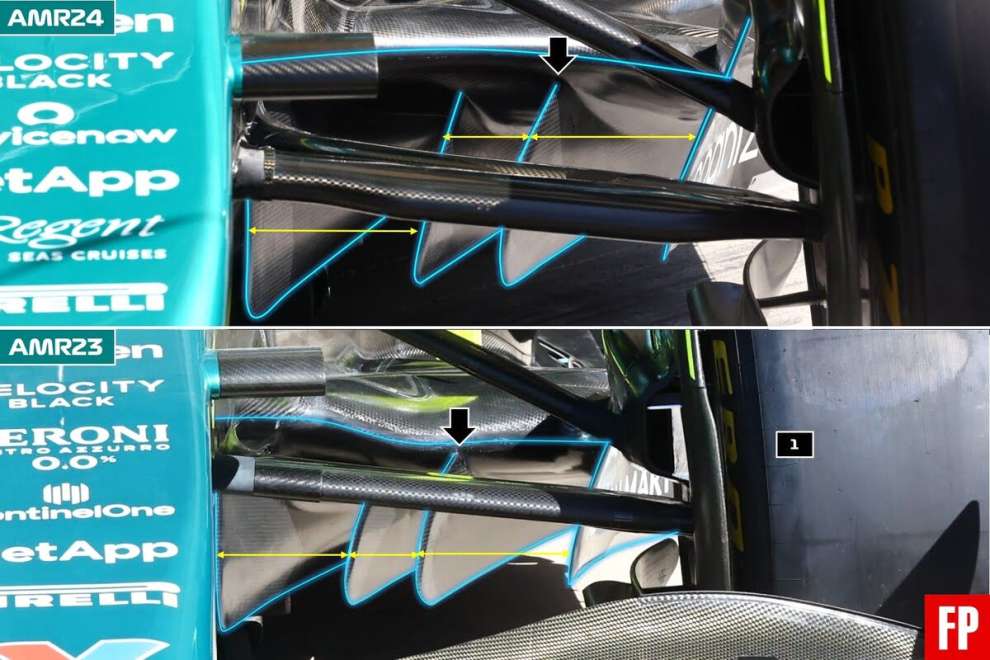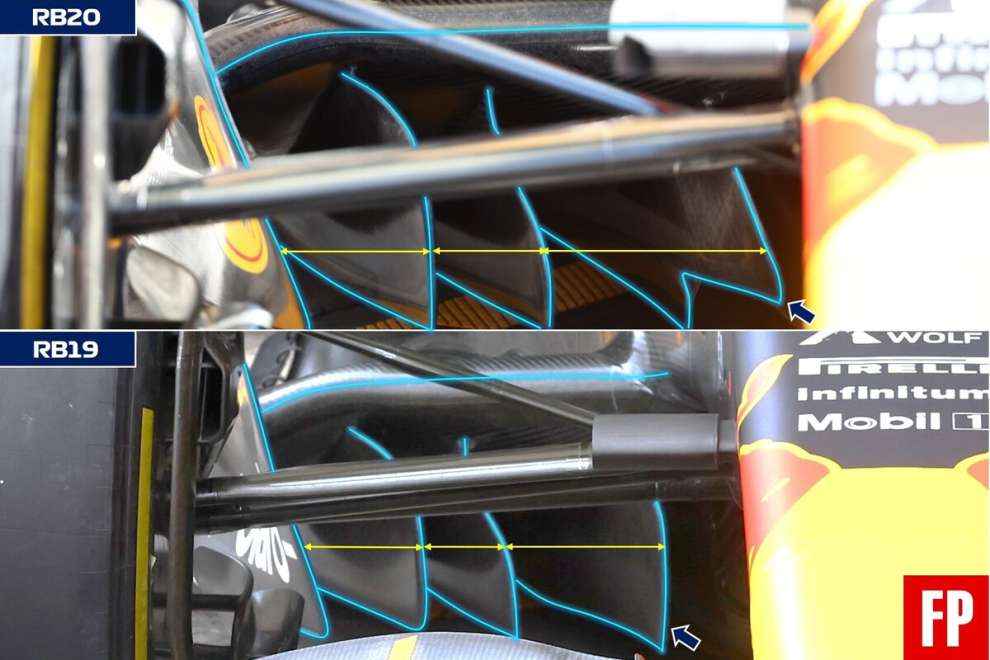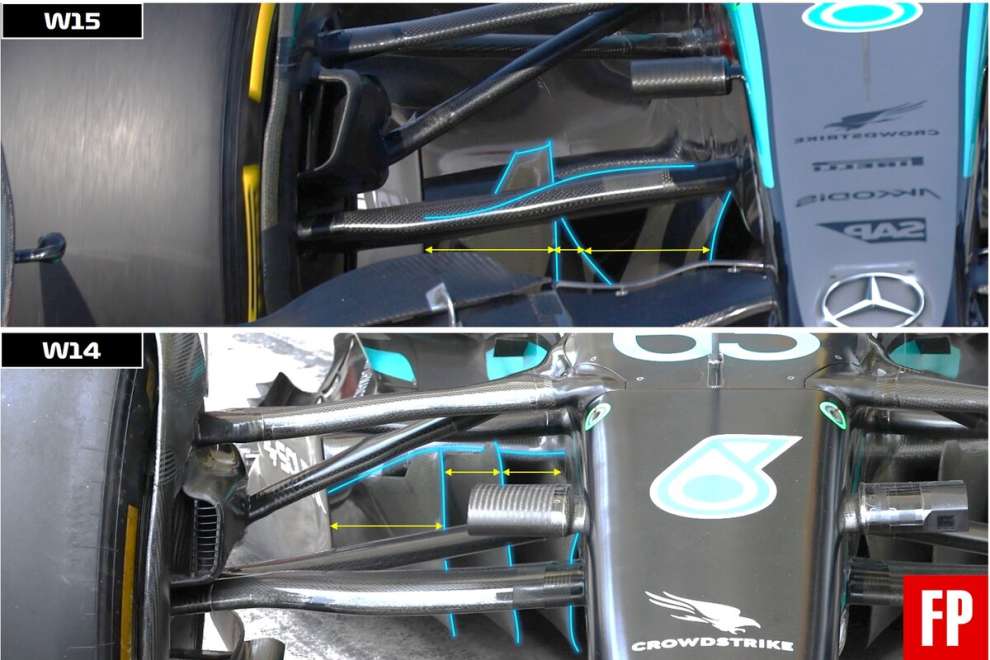By Carlo Platella
The appointment with the static display of the cars in the pit lane returns with the Bahrain Grand Prix, allowing you to better appreciate the details of the new single-seaters. Despite the flashy shapes of the bonnet and belly, the floor continues to be the central component in ground effect Formula 1 cars, from which much of the aerodynamic performance is extracted. Some details remain hidden from the outside observer, being under the car. However, the entrance section of the lateral Venturi channels offers some indications on the modifications made by the teams to the aerodynamic structure that runs under the single-seater. In fact, the arrangement of the conveyors at the entrance determines the sorting of the flows and the generation of vortices under the bottom. We have therefore compared the Venturi channels of the top five teams of the past season, alongside the specifications for the end of 2023.
Ferrari
The Scuderia di Maranello has revolutionized the car concept, also underlined by the new design of the bodywork and the redesign of the chassis. However, the entrance to the Venturi channels is similar to the 2023 version, already updated for the Suzuka Grand Prix. The SF-24 thus continues to show an equal distribution of distances between the lateral conveyors, with the innermost element acting as a bulkhead immediately below the chassis.
McLaren
The Woking team also presents itself at the starting line of the new season with an entry structure of the Venturi channels similar to that of the end of 2023. In the case of McLaren, however, the innermost conveyor is slightly detached from the chassis, opening the door for a greater flow of air to be conveyed to the rear diffuser. Andrea Stella explained how some projects initially planned for the start of the championship have actually been postponed, among which it cannot be ruled out that the a new fund.

Aston Martin
Like Ferrari, the AMR24 keeps the innermost flow conveyor close to the frame, maximizing the sorting of flows into the outermost channels, to be expelled laterally to the bottom. Compared to 2023 the shape of the roof changes of the entrance section, more arched and less wavy. The second bulkhead from the outside is also moved back, returning entirely below the channel.

Red Bull
Among the top teams, the world champions are the team that moves the most internal flow conveyor away from the chassis the most. Red Bull's goal is to widen the central channel as much as possible, to channel air directly towards the rear diffuser. The same bulkhead looks different on the RB20now carved in the lower part, introducing an extra edge which acts as a small vortex generator.

Mercedes
The W15 is the car with the most unconventional design regarding the entrance section of the Venturi channels. The roof slopes strongly towards the outside, with a trend however revised compared to 2023. The 2nd and 3rd flow conveyors, however, appear very close to each other, putting a great distance between the outermost bulkhead and the most internal, the latter close to the chassis as in the case of Ferrari and Aston Martin.

The second external conveyor also extends in height up to the Venturi channel, generating vortices and conditioning the flows also in the upper part of the bottom. On the contrary, the third element has been lowered and smoothed compared to the 2023 specification. As also seen for the side air intakes, the front wing and the rear suspension, it is a Mercedes that continues to propose original interpretations, in an attempt to mend the detachment from the summit.
#funds #compared #Ferrari #evolution #Mercedes
